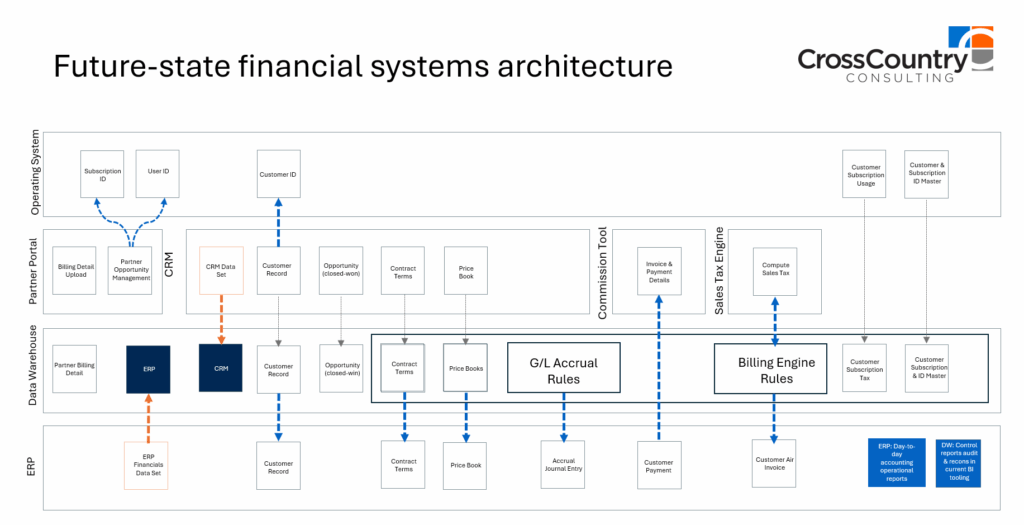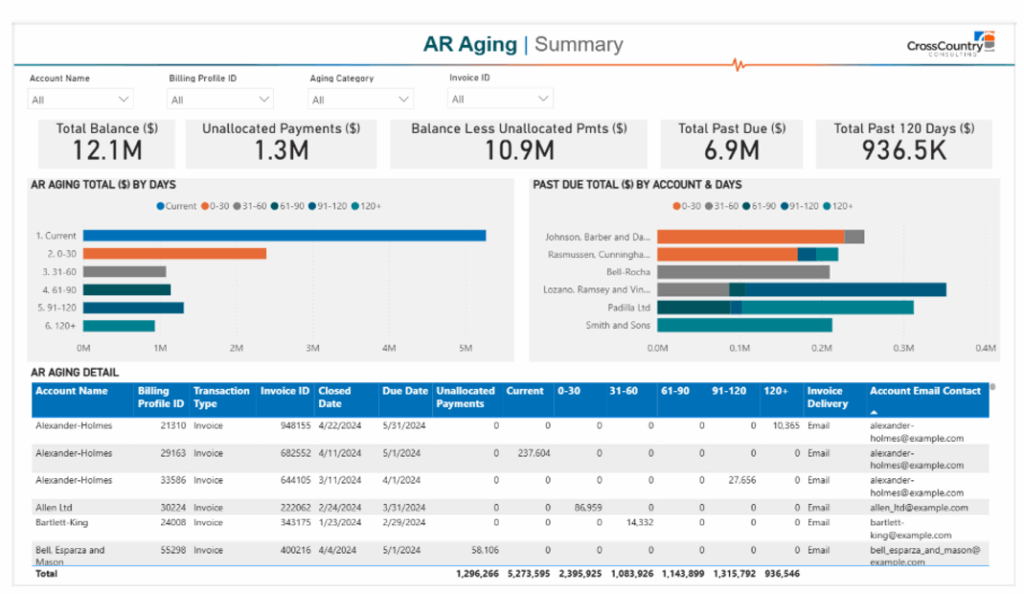Every business runs on cash generation. But what if your process is quietly draining profits, delaying deals, and frustrating customers?
The lead-to-cash (L2C) process – covering everything from customer identification, opportunity development and refinement, quoting, contracting, billing, revenue recognition, collections, and credits/refunds/concessions – is the heart of how companies manage and grow their revenue, profitability, and cash flow. It should be a seamless flow, yet too many companies are stuck with broken workflows, manual bottlenecks, and disconnected data.
The result? Lost opportunities. Slower growth. Lower margins.
The Hidden Challenges Holding Companies Back
L2C may be the most important business process because it touches every operational department and impacts the bottom line. Forward-thinking organizations are embracing advanced technologies to streamline workflows, from customer acquisition to customer billing and collections, thus accelerating and maximizing revenue realization.
But despite major advancements in automation, businesses continue to struggle with inefficient lead-to-cash workflows.
- Manual workflows and “death by a thousand spreadsheets” have become the norm, slowing down invoicing and creating data confusion. Fragmented CRM, CPQ, operating systems, ERP, billing platforms, and order management systems prevent smooth operations, leading to time-consuming billing issues – especially when handling complex pricing structures and varied contract terms.
- Collections often lag due to inaccurate AR aging reports and detail, making it difficult to track outstanding balances and enforce timely payments. Meanwhile, customer frustration grows as errors in quoting, billing, and contract execution create friction, eroding trust and driving churn.
- Many companies develop processes that don’t scale. They work well initially, only to realize later that their systems can’t keep pace with growth. For example, SaaS companies increasingly have usage-based products that make it more complex to integrate operating systems that were not developed to focus on back-end reporting and connecting to adjacent systems. Compliance risks pile up, auditability becomes a headache, and operational inefficiencies threaten long-term success.
So, how are leading companies turning this chaos into cash flow?
The Blueprint for Lead-to-Cash Success
Leading organizations aren’t just fixing problems – they’re reinventing the way revenue flows through the business. A key enabler is standardization: standardizing contracts, processes, metrics, and workflows. It all starts with a foundational data strategy, ensuring clarity in key metrics, governance frameworks, and integration across platforms.
From there, a fully integrated system architecture connects CRM, CPQ, CLM, OMS, billing, and ERP, leveraging solutions like Salesforce, NetSuite, and Coupa alongside middleware like Fivetran and Tray.ai to enable real-time data exchange and automated workflows.

Touchless contracting and billing are quickly becoming industry standard. Rather than manual negotiations, companies are shifting to automated agreements, enabling customers to digitally accept standard contract terms and be billed directly through ACH or credit card payments.
Meanwhile, centralized data warehouses like Snowflake and Databricks are reshaping analytics and reporting. Businesses can aggregate historical and real-time data effortlessly, empowering CFOs with insights that drive smarter forecasting and customer strategies. The data warehouse is the central repository to collect subscription and user data for SaaS, or fulfillment data for complex manufacturing and inventory, and facilitates the integration between other systems, as the warehouse can “normalize” the data to the format required.
Finally, deal governance (“deal desks”) ensures companies minimize excessive customizations and enforce standardized pricing and approvals, streamlining negotiations and reducing complexity.
The Business Impact: Why Automation is a Game Changer
By embracing automation, CFOs are transforming L2C processes into revenue-generating powerhouses. The results?
- Faster revenue recognition: Automating journal entries and reducing manual accounting work.
- Greater sales efficiency: Freeing up reps to focus on customers instead of administrative tasks.
- More accurate forecasting: Giving FP&A teams better visibility into customer trends and financial projections.
- Enhanced customer experience: Eliminating billing errors and seamless contract execution.
AI: The Future of Lead-to-Cash Optimization
Artificial intelligence is revolutionizing the way companies manage their revenue processes. AI-driven pricing models suggest optimal discounts based on customer behavior, while machine learning algorithms predict payment risks, prompting proactive collection strategies.
AI-powered contract data extraction identifies key renewal clauses and compliance requirements, helping businesses optimize revenue streams and reduce financial risk. And as predictive analytics grow more sophisticated, finance leaders can anticipate demand trends, forecast revenue with pinpoint accuracy, and automate invoicing like never before.
How We Can Help
At CrossCountry Consulting, we specialize in transforming lead-to-cash workflows through some of the following ways:
- Accelerated future-state design and roadmap (setting the stage for transformation): Leveraging CrossCountry’s rapid assessment methodology, gaps are identified in current-state process flows, future-state workflows are designed, a roadmap sets the stage for transformation, and stakeholders quickly align.
- Quick-win reporting and analytics (generate immediate cash and value): Utilize data transformation tools (e.g., Alteryx) to link data across systems regardless of current architectural gaps and build live dashboards (e.g., billing amounts, AR) to find missing dollars and facilitate collections.

- End-to-end system and data architecture integration (automate revenue recognition): Implement technologies, optimize configurations, or integrate core systems and workflows (e.g., CRM, CLM, Billing, ERP) through built-in connectors or middleware, and automate revenue recognition calculations and logic.
- Role and organization optimization (enable future scalability): Clarify roles and responsibilities across the new process, optimize and centralize positions as applicable, train users in new ways of working, manage change, and institutionalize documentation.
Ready to optimize your process and accelerate cash flow? Contact CrossCountry Consulting today.